Other Invertebrates
The world is full of so many species of invertebrates that starting out trying to identify them can seem insurmountable. While this guide cannot begin to help you identify all of them, it does try to cover the commoner and larger groups of mini-beasts that you may find sharing this part of the planet with you. This section covers some of the smaller groups of sometimes small, scarce or obscure species that occasionally find their way into our lives.
Use the photos and text below to narrow your search to a particular group, then click on the picture to go to the next stage.
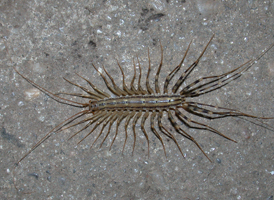 |
Centipedes
A very distinctive group of invertebrates due to the large number of legs. Centipedes differ from millipedes in having just a single pair of legs on each body segment (two pairs in millipedes). Centipedes are also fast movers as they are predatory on other invertebrates.
|
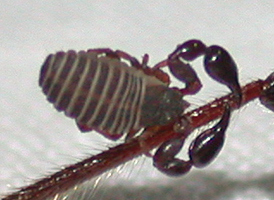 |
Pseudoscorpions
An interesting group of very small invertebrates, with most individuals being less than 3mm long. They resemble very small scorpions but without the stinging tail and hunt actively among leaf litter, or wherever feeding opportunities may arise.
|
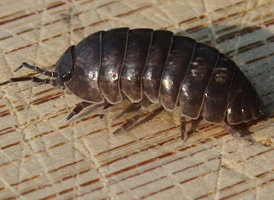 |
Woodlice
Also known as sowbugs or pillbugs, these are land-living crustaceans, bearing more legs than insects do. They are generally gray in color with an 'armored' look and are abundant in damp places under stones, wood and other solid objects.
|
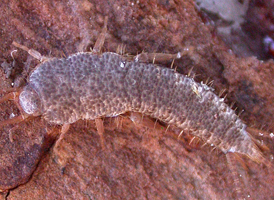 |
Bristletails
A group of insects that may be find both indoors and outdoors. Most species are coated in mealy scales and have three long 'prongs' at the rear end of the abdomen. Woodland species can often be found on tree trunks. Indoor species are often minute and easily overlooked, though they can do damage to books.
|
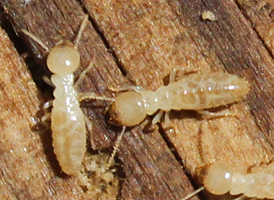 |
Termites
Colonial insects that live below ground and are mostly only seen when they are out foraging at night, or if searched for under rotting wood. Pale straw-colored, or with reddish-brown heads, these are smaller insects than most ant species - though the groups are often confused with each other.
|
 |
Cockroaches
Fast-moving, flattened but sizeable insects, best known for their occasional invasion of our kitchens and places that provide similar feeding opportunities. Most species are reddish-brown in color and individuals may be winged or not (depending on age and sex). Some species inhabit woodland and may be common on the forest floor.
|
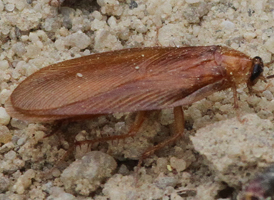 |
Cockroaches
Fast-moving, flattened but sizeable insects, best known for their occasional invasion of our kitchens and places that provide similar feeding opportunities. Most species are reddish-brown in color and individuals may be winged or not (depending on age and sex). Some species inhabit woodland and may be common on the forest floor.
|
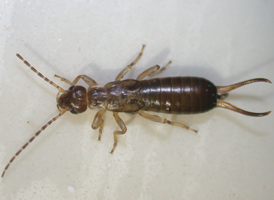 |
Earwigs
Rather primitive insects that can readily be found in garden habitats by searching among dead or dying plant material. The pincer-like appendages at the end of the abdomen identifies this group.
|
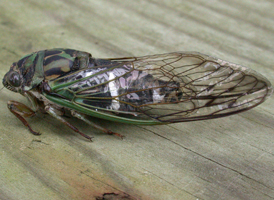 |
Cicadas
The perpetual hum or buzz of cicadas fills the air through the hot summer days, though they are seldom seen unless you make the effort. These are bulky-bodied, long-winged insects with chunky, thick set heads and a strong, direct flight.
|
 |
Cicadas
The perpetual hum or buzz of cicadas fills the air through the hot summer days, though they are seldom seen unless you make the effort. These are bulky-bodied, long-winged insects with chunky, thick set heads and a strong, direct flight.
|
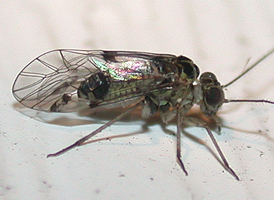 |
Bark Lice
Bark Lice are tiny, fly-like or aphid-like creatures, best recognized by their rather hump-backed look and relatively long antennae.
|
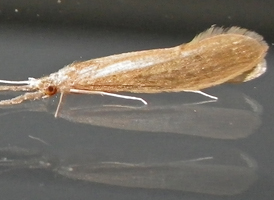 |
Caddisflies
Summer insects that often get attracted to light, especially near water. Often mistaken for small moths but a close look at the head and - especially - the usually very long antennae, will reveal subtle differences.
|
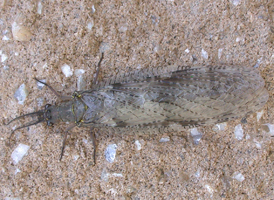 |
Fishflies
A group of rather daunting insects, with some growing to nearly three inches long and the males bearing formidable mandibles. Wings are usually marked with dark patterns and these insects are most often seen when they get attracted to light during the summer months.
|